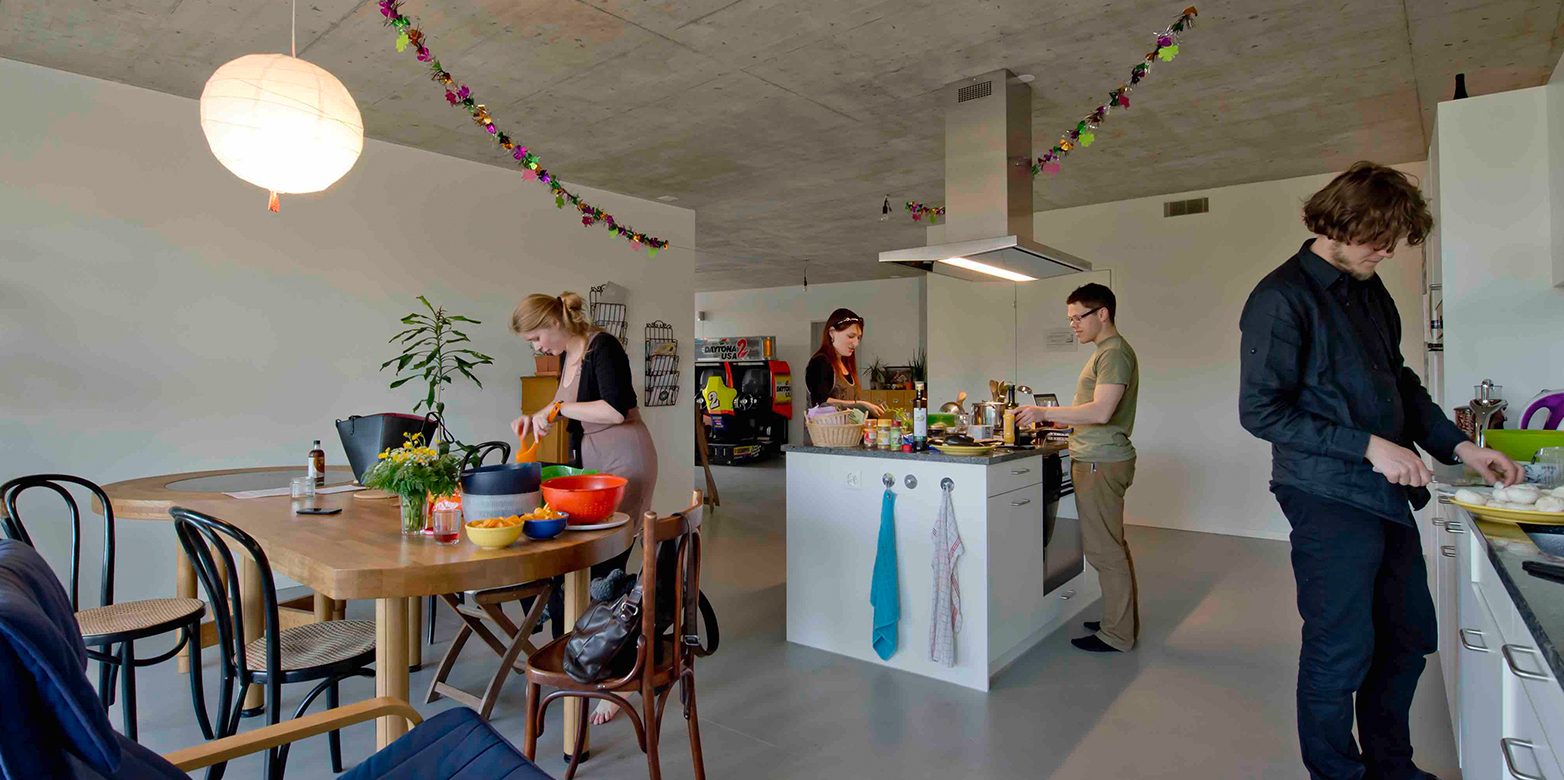Micro Living/Cluster Living

Evaluation of housing concepts for micro households as a model for sustainable urban development
Against the background of demographic change and the lack of housing in urban agglomerations, the project investigates various forms of housing for micro households such as micro-apartments and cluster apartments as a model for securing future urban housing. On the basis of selected reference projects in Switzerland and Germany, both the economic and social dimensions of the new forms of housing are evaluated and compared as a contribution to sustainable urban development.
The fundamental goal of all new forms of living for micro households is to offer 1-2-person households the possibility of finding affordable living space in an urban living environment while at the same time maintaining a social living environment. The term cluster apartments is used to describe forms of housing that combine micro-apartments and shared flats. For this purpose, very small apartments with additional communal facilities will be combined into larger residential units. Micro-apartments are very small apartments that include additional common rooms in the house but are not based on the concept of shared living. The target group for these forms of housing for small households are single people, especially older people, as well as students and single parents with children, who are dependent on affordable housing in a central location.
The project examines the economic and social advantages and disadvantages of new forms of housing with regard to future developments such as inner-city density, demographic change and affordability.